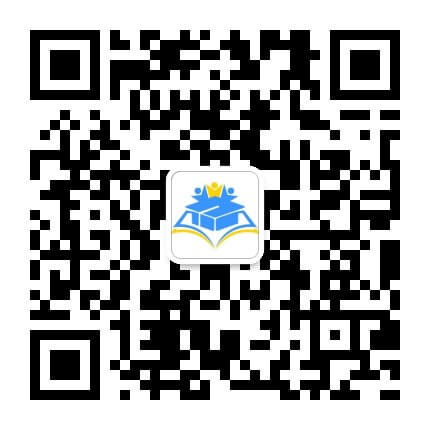摘要:College Board在AP English领域推出两个姊妹课程,分别为AP语言与写作(AP English Language and Composition)和AP英语文学与写作(AP English literature and Composition),以下简称AP文学和AP语言。
(AP课程包括:AP生物、AP美国历史、AP计算机、AP心理学、AP欧洲史、AP化学、AP英美文学、AP微积分、AP物理、AP化学等。AP师资团队全部是由顶尖名校毕业、且AP教学时长在3000个小时以上的教师亲授课程。授课方式:一对一全程名师督导备考陪同,量身定制互动直播授课,点题讲题破题一步到位,反复实战演练,助力AP考生备考冲刺5分。)
咨询课程顾问,免费领取全套AP考试指南和真题学习资料。
1.AP英语两门课的区别
College Board在AP English领域推出两个姊妹课程,分别为AP语言与写作(AP English Language and Composition)和AP英语文学与写作(AP English literature and Composition),以下简称AP文学和AP语言。
很多同学不清楚这两门课的区别,今天我们就来仔细地分析一下。英语课是所有的美国大学都要开设的必修课程,其重要性不言而喻。而AP作为大学入门级课程先修课自然要反应大学课程的内容,要求和难度。
大学开设的英语课通常有以下几种模式。首先就是英文写作课,学生会阅读不同风格的文本,并且学习基本的修辞手法,要学会带着明确的目的写作,针对不同的读者群写出不同风格的文章。有些大学在第一学期开写作,第二学期会开设针对议论文argumentation的课程,强调整合资料,引用证据等写作技能。也有些大学第二学期会开设文学作品的阅读和分析课,会大量的阅读和分析不同时代不同风格的诗歌小说,戏剧。
针对大学的课程设置,CB开设了两种英语课,即AP文学和AP语言。CB在官网上让老师考虑学生的以下因素,来决定选哪门课:
首先,判断学生的兴趣所在。如果学生喜欢阅读非虚构类的作品,并且喜欢写议论和分析类的文章,那么可以考虑AP语言;如果学生对虚构的文学作品,比如诗歌,戏剧,小说更感兴趣,愿意阅读不同时代,不同题材的作品,则可选AP文学。
其次,选课时也要考虑一下学生未来所读大学开设的英语课情况以及具体的换分政策。如果未来要申请的大学开设文学课,并且明确要求只有AP文学才可以抵相关课的学分,那么很显然选择AP文学在该大学中更有优势。
2.AP文学考试形式介绍
AP文学考试一共3小时。包括,60分钟的选择题部分和120分钟的写作部分。
在选择题部分,学生会遇到5篇文学作品选段,包括诗歌,戏剧和小说,Prose和Verse的比重基本相同,每篇文章后面有10或11道选择题,共55道题。写作部分2小时,平均40分钟要写完一篇essay,第一篇为诗歌分析,第二篇是小说选段分析,第三篇是给出一个开放性的论点,学生利用已经读过的经典作品来阐述该观点。
考试中的作品范围从16世纪到21世纪,体裁包括诗歌,戏剧,小说,散文。学生不仅要读懂作品,还要能够对作品从写作手法和修辞手法方面进行分析,并且能敏感地察觉作品与历史,文化大背景的关联。可以说是对学生综合语言能力的考察,尤其是写作部分,占总分的55%,最能体现学生的水平。
和其他AP科目一样, AP文学评分采取5分制,5分为极其优秀,3分为合格,可换取大学相关课程学分或者免修资格。(具体换分政策还要看每个学校不同)
3.AP文学5分率情况
我们从下图可以看到AP文学近10年的得分情况。首先,考试人数在逐年增加,从2008年的32万考生至2017年的40万考生。大家所关注的5分率相对惨淡,变化不大,在7%左右浮动,2017年是6.8%,这个数字也低于今年所有学科的平均5分率,13.3%。
4.AP文学的选课条件
从5分率上确实看出,AP文学是最难的几门AP学科之一。对于中国学生来说这门课的第一挑战就是语言层面的难点。因为作品语言最早可以设计到16世纪,文艺复兴时期的诗歌和戏剧,有些词汇非常古体(archaic) 如“hath, thou, thee”拼写和当代的英文不同,第二人称和第三人称动词还会有不同的词尾。在syntax句法的层面,结构上也和当代英语的习惯不同,大量的倒装句和插入语,都会导致阅读的障碍。
除了语言层面的挑战,AP文学对学生的阅读量也是有要求的,不仅要有广度,还要有深度。诗歌,戏剧,小说,散文都要涉猎,而且至少要熟读5本以上的完整小说或戏剧。熟悉到可以拼写出人物的名字,叙述作品的剧情,并且可分析其主题和象征等。
此外,AP文学对于写作能力是有很高要求的。结构要清晰,遣词造句要正式学术,态度要客观,在分析作品的时候要有理有据。写作部分尤其看重学生有意识地引用文本证据来支持自己观点的能力,不可空谈。而很多中国学生在中文课上的作文习惯表达主观情绪,这恰好反了AP文学的大忌。
综上所述,建议选考AP的学生托福至少已经在100分以上,并且对文学有足够的兴趣,有一定的阅读速度和阅读量的积累。
5.备考建议
首先,建议同学们博览群书,利用课余的时间阅读原版著作,积累自己的词汇量和阅读量。
第二,要积极和老师或者同学讨论作品的细节,如措辞,比喻,象征,主题等等。在讨论甚至是辩论中理解文字的复杂特性,以及解读文学作品的开放性。在平常阅读时就要联想和应用老师课上的文学术语,比如irony, allusion, tone等等,有批判的带着目的去读书。
第三,通过影视作品来快速直观的解文学作品,并且提高我们对文学的兴趣。大部分经典的小说都已经被搬上了荧幕,比如《傲慢与偏见》《简爱》《哈姆雷特》《了不起的盖茨比》等等,我们在看电影的同时不仅了解了作品的情节,更是对不同时代的社会风俗有了最直观的认识,让我们有穿越一般的体验,这是文字无法带给我们的。当然大家注意在选择电影的时候,尽量挑选忠实于原作品的。
第四, 多练习写作。平常我们应该每周练习一篇文学评论的写作,并且在老师批改后,对自己的文章进行反复打磨,提高写作水平。
6.阅读书目,走心推荐
以下的作品是我在授课中会选到的一些作品,符合AP考纲的要求,基本涵盖了16世纪到现当代的不同体裁的作品。
当然,大家也可以根据自己的兴趣来选择。只要是经过时间考验的经典作品,都可以阅读学习。而且这些作品的语言难度不同,开始可以选择语言简易一些的来读,比如 A Doll’s House, The Color Purple等等。
诗歌:
Edmund Spencer: Sonnets
Shakespeare: Sonnets
John Milton: Paradise Lost
John Donne: Valediction Forbidden Mourning / Go and Catch a Falling Star
Alexander Pope: Human
Thomas Grey: Elegy Written in a Grave Yard
William Wordsworth: A Solitary Reaper
Percy Shelley: Ode to the West Wind
Lord Byron: She Walks in Beauty
John Keats: To Autumn / On First Looking into Chapman’s Homer
Robert Browning: My Last Duchess
Mathew Arnold: Dover Beach
W. B. Yeats: When You are Old /Salley Gardens /The Lake Isle of Innisfree/The Wild Swans at Coole/ The Second Coming / Sailing to Byzantium
Emily Dickinson: Because I could not Stop for Death/ I heard a Fly Buzz When I died/ The Brain is Wider than the Sky/ Water is Taught by Thirst
Walt Whitman: I Hear America Singing
Robert Frost: Stopping By Woods on a Snowy Evening/ Mending Wall/ Aquainted With the Night
Elizabeth Bishop: One Art / The Imaginary Iceberg
戏剧:
William Shakespeare: Excerpt from Romeo and Juliet/ “The Balcony Scene”
William Shakespeare: Excerpt from Hamlet “To be or Not to be” Soliloquy
William Shakespeare: Macbeth
Henrik Ibsen : A Doll’s House
Susan Glaspell: Trifles
Sophocles: Antigone
小说:
Thomas Hardy: Tess of Dur’ Beeville’s
Jane Austin: Pride and Prejudice
Charlotte Bronte: Jane Eyre
Emily Bronte: Wuthering Heights
Oscar Wilde: The Picture of Dorian Gray
Joseph Conrad: Heart of Darkness
Virginia Woolf: Mrs. Dalloway
Nathaniel Hawthorn: The Scarlet Letter
Mark Twain: The Adventures of Huckleberry Finn
F. Scott Fitzgerald: The Great Gatsby
Earnest Hemingway: A Farewell to Arms
Kate Chopin: The Awakening
Henry James: The Turn of the Screw
Alice Walker: The Color Purple
Amy Tan: Joy Luck Club
短篇小说:
James Joys: Araby
Virginia Woolf: The Lady in the Looking Glass
Nathaniel Hawthorn: The Minister’s Black Veil
Kate Chopin: The Story of an Hour
Ernest Hemingway: In Another Country
William Faulkner: A Rose for Emily
散文:
Jonathan Swift: A Modest Proposal
Francis Bacon: Of Studies
Thomas De Quincy: On the Knocking at the Gate in Macbeth
Ralph Waldo Emerson: Nature / Self-reliance
Henry David Thoreau: Walden / On Civil Disobedience

7.AP样题
为了让大家切实感受到AP文学考试的题目类型和难度,以下选择了一篇有代表性的诗歌MC,还有essay 题目两篇,代表真正考试的essay 1和essay 3。
Multitple Choice Section : Question 1 to 12.
Read the following poem carefully before you mark your answers.
Remembrance
Cold in the earth—and the deep snow piled above thee.
Far, far removed, cold in the dreary grave!
Have I forgot, my only Love, to love thee
Severed at last by Time’s all-severing wave?
Now, when alone, do my thoughts no longer hover
Over the mountains, on that northern shore,
Resting their wings where heath and fern leaves cover
Thy noble heart forever, ever more?
Cold in the earth—and fifteen wild Decembers,
From those brown hills, have melted into spring;
Faithful indeed is the spirit that remembers
After such years of change and suffering!
Sweet Love of youth, forgive, if I forget thee,
While the world’s tide is bearing me along;
Other desires and other hopes beset me,
Hopes which obscure, but cannot do thee wrong!
No later light has lighted up my heaven,
No second morn has ever shone for me;
All my life’s bliss from thee dear life has given,
All my life’s bliss is in the grave with thee.
But, when the days of golden dreams had perished,
And even Despair was powerless to destroy,
Then did I learn how existence could be cherished,
Strengthened, and fed without the aid of joy.
Then did I check the tears of useless passion—
Weaned my young soul from yearning after thine;
Stern denied its burning wish to hasten
Down to that tomb already more than mine.
And even yet, I dare not let it languish,
Dare not indulge in memory’s rapturous pains;
Once drinking of that divinest anguish,
How could I seek the empty world again?
1. This poem is best identified as
A. A ballad
B. An apostrophe
C. An elegy
D. A lyric
E. A sonnet
2. This poem’s structure is specially that of
A. aabb rhyme scheme throughout
B. blank verse
C. free verse
D. alternating rhymed couplets
E. alternating rhymed lines within quatrains
3. The metaphor present in the second stanza concerns
A. northern mountains
B. noble heart
C. heath and fern
D. winged thoughts
E. hovering birds
4. Which stanza contains examples of all of the following: alliteration, assonance, anaphora, and consonance?
A. one
B. four
C. five
D. six
E. eight
5. The reader can infer from this passage that the narrator has
A. continued to weep for a loved one
B. found new joy to live for
C. never stopped yearning
D. lamented a death for 15 years
E. been unfaithful to the departed
6. The narrator’s diction within the last two stanzas is that of
A. a sorrowful child
B. a desperate mourner
C. an ominous portender
D. a passionate young woman
E. a struggling disciplinarian
7. The narrator’s tone in stanzas four and five can best be described as
A. apology and acquittal
B. lamentation and sorrow
C. resignation and determination
D. reminiscence and nostalgia
E. desperation and despair
8. In line 29, the word “it” refers to
A. “tears of useless passion”(line 25)
B. “my life’s bliss”(line 20)
C. “days of golden dreams”(line 21)
D. “my young soul”(line 26)
E. “memory’s rapturous pain”(line 30)
9. The narrator’s present attitude toward what might have been is one of
A. wistful regret
B. despair and anguish
C. passionate remorse
D. blissful reminiscence
E. change and suffering
10. Stanzas one and eight can be said to
A. capture the message of the poem
B. bring the poem full circle
C. imply blissful, unrequited passion within the narrator
D. demonstrate the narrator’s therapeutic healing
E. remonstrate with the narrator’s suicidal notion
11. The final stanza of this poem has at least two examples of
A. metaphor
B. oxymoron
C. synecdoche
D. onomatopoeia
E. conceit
12. The reader can infer from stanza four that
A. a new love has entered the narrator’s life
B. the narrator has worse things to cope with than another’s death
C. one’s existence can only be strengthened by feeding it with joy
D. life, even after great loss, can and should continue
E. the narrator was destroyed by Despair
13. The narrator makes reference to all of the following EXCEPT
A. the passing of 15 years
B. new hopes and desires that obscure memory
C. memories like winged spirits
D. the inability to live without the departed
E. fear of the soul’s indulgence in rapturous pain
Essay question 1
The following excerpt is taken from Shakespeare's Macbeth, Act I. Read it carefully and then in a well-organized essay analyze Macbeth's internal conflict before his murder of King Duncan. You may wish to consider tone, figures of speech, diction, imagery or any other relevant literary element.
If it were done when ’tis done, then ’twere well
It were done quickly. If th’assassination
Could trammel up the consequence, and catch
With his surcease success: that but this blow
Might be the be-all and the end-all, here,
But here upon this bank and shoal of time,
We’d jump the life to come. But in these cases
We still have judgement here, that we but teach
Bloody instructions which, being taught, return
To plague th’inventor. This even-handed justice
Commends th’ingredience of our poisoned chalice
To our own lips. He’s here in double trust:
First, as I am his kinsman and his subject,
Strong both against the deed; then, as his host,
Who should against his murderer shut the door,
Not bear the knife myself. Besides, this Duncan
Hath borne his faculties so meek, hath been
So clear in his great office, that his virtues
Will plead like angels, trumpet-tongued against
The deep damnation of his taking-off,
And pity, like a naked new-born babe,
Striding the blast, or heaven’s cherubin, horsed
Upon the sightless couriers of the air,
Shall blow the horrid deed in every eye
That tears shall drown the wind. I have no spur
To prick the sides of my intent, but only
Vaulting ambition which o’erleaps itself
And falls on th’other.
Essay question 2
From a novel or play, identify a character (not necessarily the protagonist) who, regardless of the consequences, takes a risk of some kind. Then in a well-organized essay, describe the risk and its motivation. Also explain how the character's action illuminates the meaning of the work as a whole. Choose any of the titles in the following list, or choose one of comparable literary merit. Avoid mere plot summary.
The Catcher in the Rye
The Great Gatsby
Hamlet
A Doll's House
A Tale of Two Cities
Macbeth
The Awakening
Anna Karinina
Crime and Punishment
Jane Eyre
The Old Man and the Sea
Paradise Lost
Moby Dick
The Red Badge of Courage
Dr. Faustus
Antigone
Robinson Crusoe
King Lear
(AP课程包括:AP生物、AP美国历史、AP计算机、AP心理学、AP欧洲史、AP化学、AP英美文学、AP微积分、AP物理、AP化学等。AP师资团队全部是由顶尖名校毕业、且AP教学时长在3000个小时以上的教师亲授课程。授课方式:一对一全程名师督导备考陪同,量身定制互动直播授课,点题讲题破题一步到位,反复实战演练,助力AP考生备考冲刺5分。)
咨询课程顾问,免费领取全套AP考试指南和真题学习资料。


